
Chinese LionKing800 cellphone claims 1-year standby
Chemical brain controls nanobots
A tiny chemical “brain” which could one day act as a remote control for swarms of nano-machines has been invented.
The molecular device – just two billionths of a metre across – was able to control eight of the microscopic machines simultaneously in a test.
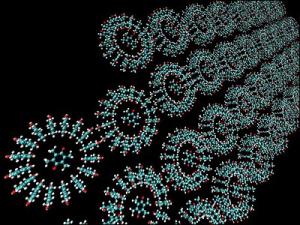

Engineer Envisions Subcutaneous Display Powered by Blood
Source: Dailytech
An engineer named Jim Mielke has invented a display that is wireless and powered by blood. The display would be implanted into the body between the skin and the muscle as a tight roll. According to Mielke the roll would then unfurl and position itself between muscle and the skin.
Once unfurled, the display would get its power from the blood. Specifically a small fuel cell would have leads hooked up to an artery and a vein allowing for blood to flow through a blood fuel cell that converts the oxygen and glucose in the blood into electricity.

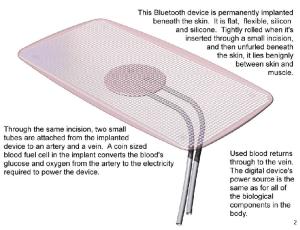
Cheap Alternative Energy Now Just a Print Job Away
Source: Dailytech
Massachusetts-based Konarka Technologies, Inc, a company with a healthy history of commercial experience, developed and demonstrated a commercial-grade process for printing cells on inkjet printers. All quips about inkjet cartridge costs aside, the new process holds tremendous potential to revolutionize the solar photovoltaic industry.

Quantum Computer Researchers (Tokyo) Store "Sub Zero" Light Vacuum
Source: Dailytech
Teams of physicists at the University of Calgary and the Tokyo Institute of Technology independently demonstrated that a squeezed vacuum can be stored in a collection of rubidium atoms and retrieved when necessary. The work appears in today’s edition of the physics journal Physical Review Letters. In it the researchers detail how they verified that the space remained squeezed when retrieved, compared to no light.
Scientists Feed Vitamins to Bacteria to Increase Electrical Output
Source: Dailytech
Researchers have made an exciting new microbiological breakthrough involving a very special type of bacteria. It has been known for some time that the bacteria, Shewanella, found commonly in water and soil, produces electricity when it digests organic matter. This led to researchers taking special interest in its potential as a natural generator. However, a major roadblock to such alternative energy plans was the fact that it was unknown until now is exactly how the bacteria accomplished its electrical generation, or whether the process could be governed.
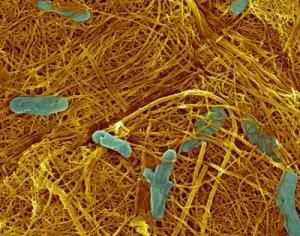
Levitating Computer Interface
Source: Dailytech
The interface itself – a floating, bowl-shaped device controlled by a handle the user grabs – is magnetically suspended inside a larger, open-faced main shell. When gripped by a user, it grants a full six dimensions of movement, while responding to the force-feedback output of the computer. A video produced by Carnegie Mellon researchers shows users manipulating a small cube trapped inside another, larger cube: responding appropriately when the small cube collides with the larger cube’s walls, and allowing users to push, pull, twist, and flip the small cube with relative ease. Another video segment shows a different user using two maglev interfaces to manipulate a series of simple geometric objects around a 3D playfield.

Tokyo Lost&Found: $23 million returned in 2002
'Enjoy life while you can'
Interesting article about global heating and such
http://www.guardian.co.uk/theguardian/2008/mar/01/scienceofclimatechange.climatechange
Specialized nanotubes set the record for the blackest material on Earth
Source: Dailytech
The key to the technology is atom-thick nanotubes. The tubes are arranged vertically on the surface, widely-spaced and standing on end, like the bristles of a paint brush. The key is the spacing. By widely spacing the tubes, light is able to enter the material, but then ends up trapped within the collection of thin tubes.
Project leader and Rensselaer physics professor Shawn-Yu Lin explains, “The loosely packed forest of carbon nanotubes, which is full of nanoscale gaps and holes to collect and trap light, is what gives this material its unique properties. Such a nanotube array not only reflects light weakly, but also absorbs light strongly. These combined features make it an ideal candidate for one day realizing a super black object.”
To give an idea of exactly how black the result is, black paint reflects approximately 5 percent of the visible light that strikes it. The previous darkest material was a nickel-phosphorous compound, which only reflected 0.35 percent of visible light. The new nanotube compound blows away these previous competitors, reflecting a bare 0.045 percent of the visible light that hits it. This is almost nine times less than the previous record holder and over a hundred times less than black paint.

Bacteria and Nanofilters Partner to Clean Water
Source: Dailytech
New research promises sustainable filters, fuel, and a better understanding of fluid dynamics
Bioremediation, the study of using living organisms to remove pollutants or contaminants from the environment, is a hot new field of research. Nanotechnology, including carbon nanotubes, nanoparticles, and nanomembranes is another extremely hot field, which promises to one day provide revolutionary improvements to nearly every field of science. Combine the two fields and you get the University of Nottingham’s new research.
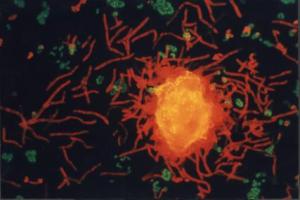
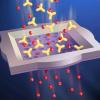
JAXA (Japan) Satellite Promises to Pump Worldwide Internet Speeds
Source: Dailytech
A new JAXA satellite, which promises to bring rural subscribers’ connections up to speed, launched last Saturday from Japan’s Yoshinobu Launch Complex at the Tanegashima Space Center. The new satellite, named WINDS, promises “super high-speed Internet” throughout the world. It was developed as a joint project between Japan Aerospace Exploration Agency (JAXA) and Mitsubishi Heavy Industries.
The satellite promises residential internet subscribers the ability to use small dishes to connect to the Internet many times faster than speeds current DSL or cable connections. According to the Associated Press the satellite will provide data transmission at rates up to 1.2 Gbps. The service will initially focus on the Asia-Pacific region, covering such high-tech giants as Japan, South Korea, Taiwan, and likely China. However, if the service catches on, U.S. providers will be certain to want North American coverage as well.

MetaRAM Doubles, Quadruples Memory Capacity of Existing Systems
Source: Dailytech
MetaRAM technology to cut server and workstation memory costs by up to 90 percent
Fabless semiconductor company MetaRAM today launched a new memory technology, called DDR2 MetaSDRAM that promises to double or quadruple memory capacity while maintaining compatibility with existing DIMMs.

CFast memory cards to have data throughput of 375MB/sec
Source: Dailytech
A new memory card format on the horizon called CFast will use the newer, much faster serial ATA interface allowing it to hit a maximum speed of 375MB/sec. This faster data throughput will make for increased performance in burst shooting modes and faster read times when you put the CFast card into a card reader to transfer to the computer.
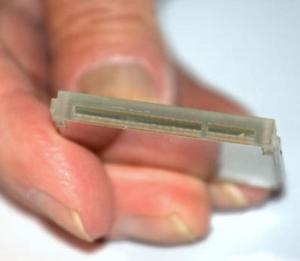




Recent Comments